Liège (German: Lüttich, Dutch: Luik) is the largest city of Wallonia, the French-speaking part of Belgium, and the capital city of the namesake province.
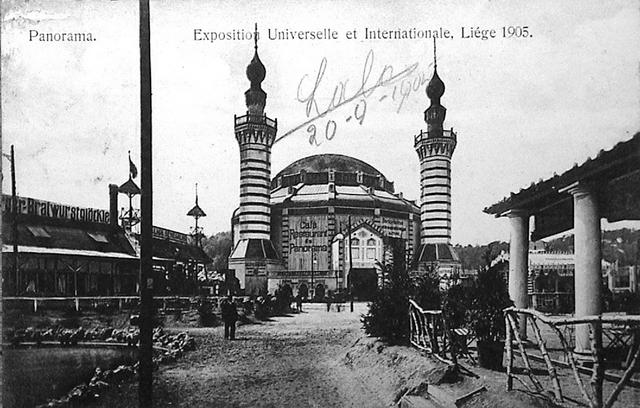
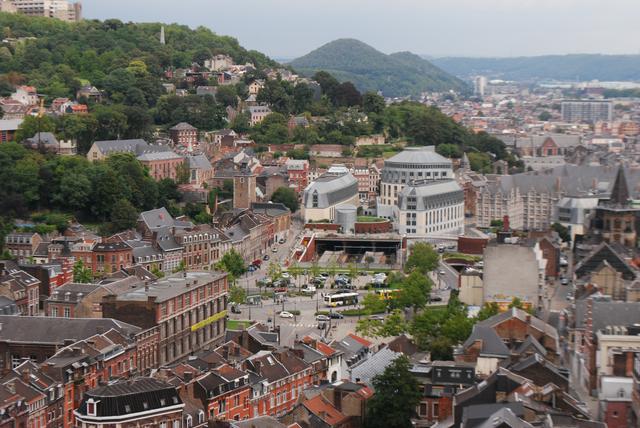 At the foot of Ardennes on the river Meuse, it has been a prominent urban centre since the Middle Ages, but really blossomed during the industrial revolution, when it grew to become Belgium's third-largest metropolis, after Brussels and Antwerp. Thanks to its strategic position, Liège still enjoys relative affluence and economic importance, in contrast to its fellow Wallon cities farther south.
At the foot of Ardennes on the river Meuse, it has been a prominent urban centre since the Middle Ages, but really blossomed during the industrial revolution, when it grew to become Belgium's third-largest metropolis, after Brussels and Antwerp. Thanks to its strategic position, Liège still enjoys relative affluence and economic importance, in contrast to its fellow Wallon cities farther south.
Despite its size and location in-between some of the most-visited cities in Europe, Liège sees very little tourist traffic. Those who find it along their itinerary might be surprised to find the purported industrial city to be quite green, with wide boulevards, an interesting, if a bit disorderly, mix of architecture from different periods, much greenery and picturesque riverbanks and hillsides. There are also quite a few museums and other points of interest, enough for at least a busy day trip.
Liège has been an important city since the early Middle Ages. It was the capital of the Principality (prince-bishopric) of Liège, which remained an independent state until the French Revolution (around 1789). In the 19th century it became an early centre of industrialism. Today it is a large city of 200,000 inhabitants, with a total 750,000 in its metropolitan area. A city heavily shaped by waves of immigrants, Liège has important Italian (making up at least 5% of the population), Spanish, German, Moroccan, Turkish, and Sub-Saharan African communities (the latter being one of the largest in Belgium).
The central area of Liège presents itself as a rather interesting mix of a historic town centre (dotted with a few extremely brutalist buildings from the 1960s and 70s), a rather elegant new town with wide boulevards, tall apartment buildings (some Art Deco), narrow street with small businesses, a few pretty parks, and a few interesting shopping arcades. The outskirts of Liège consist mainly of 2 very distinctive areas: large industrial complexes sprawling on the river's bank in the north and the south (with the cities of Seraing and Herstal) and working-class areas in the east and the west with mainly spare green neighborhood for healthy people.
Liège is located just at the beginning of the Ardennes, which makes the landscape of the south very different than the rest of the city, with high hills and abundant forests (Sart-tilman and beyond).
- Tourist office, Féronstrée 92, +32 4 221 92 21. 9:00 am – 5:00 pm.
Tourist office, Féronstrée 92, +32 4 221 92 21. 9:00 am – 5:00 pm.
Place St. Lambert. is a major square in the centre, where a number of key sights may be found. It was the site of Gothic Cathedral of Our Lady and St (Cathédrale Notre-Dame-et-Saint-Lambert), representation of religious power, torn down at the start of the 19th century after the revolution of Liège and today memorialized by metal columns and a design traced on the ground. At Place Saint Lambert 9-17, admire the neo-classic façades, dating from the late 19th and early 20th centuries.
- Palace of the Prince-Bishops. Composed of the Palace of Justice (classic façade at Place Saint Lambert 18) and the Provincial Palace (lateral neo-gothic façade at place Notger 2). This palace is the heart of the city, and represents the political power of the old Prince-Bishops of Liège.
- archéoforum, +32 4 250 93 70. Open 10AM-6PM from Tuesday to Saturday, 11AM-6PM on Sunday, closed on Monday. an underground archeological site with the remains of the three (successive) cathedrals on the site, as well as a building from Roman times. €5.50 (Guided); €3.00 (Un-Guided).
- Hôtel de ville de Liège, place du Marché, 2. Perron, and houses along the market square. The town hall, is an elegant classic building. It was built in 1714, during reconstruction after the French attacks in 1691. It can be visited on rare occasions only, except for the "salle des pas perdus" - "room of lost steps" which is freely accessible. The houses on the square, with their charming blue stone and brick faces, date from the same period. The Perron, symbol of the city's freedom, is at the center of the square above the fountain that acts as its support. The perron is one of the symbols of the city and was used to render justice.
Other sights in the historic city centre include:
- Hôtel d’Ansembourg, Feronstrée 114, +32 4 221 9402. Now a museum (Musée d’Ansembourg), is worth visiting for the well-preserved original interior €3 - €5.
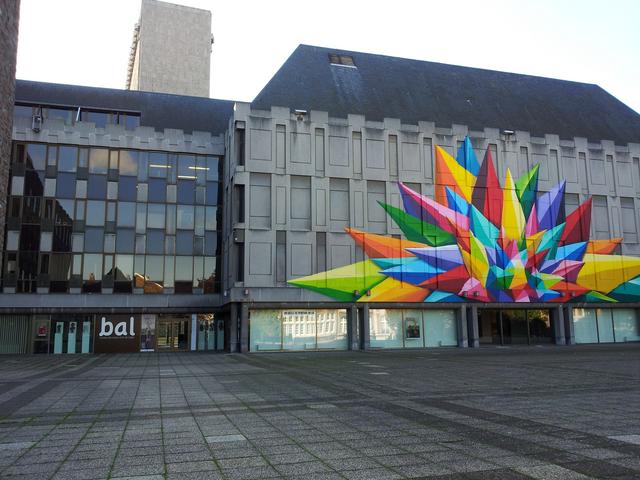
- Musée des Beaux-Arts de la Ville de Liège, Parc de la Boverie 3, +32 4 238 55 01. Open 1-6PM Tu-Sa, 11AM-4:30PM Su, closed Mo. The old museum in the city closed down and moved to Boverie Parc with its works by regional painters since the Roman times. €8 - €10.
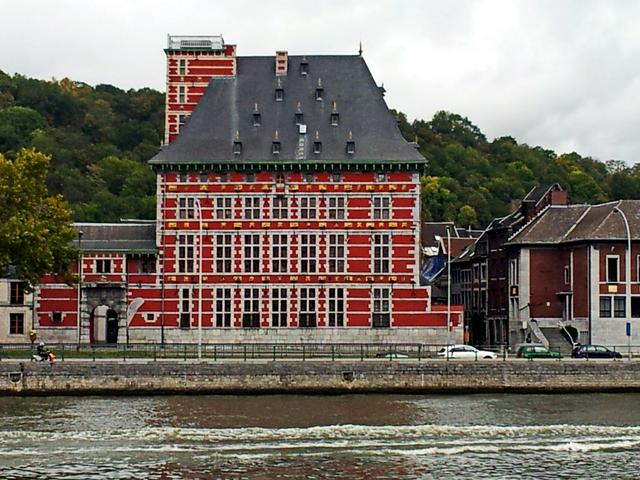
- Curtius Palace, Féronstrée 136, +32 04 221 68 17. This imposing 8-story building from the start of the 17th century was the store of a rich arms merchant, art and history collections
- Hôtel de Hayme de Bomal, quai de Maestricht 8 and rue Feronstrée 122. was an official building under French rule and twice welcomed Napoleon.
- Saint Barthélémy Church, rue Saint Barthélémy 2, +32 4 223 4998. Open 10-12AM and 2-5PM from Monday to Saturday, 2-5PM Sundays. was the last of 7 "collégiales liégeoises" to be built, near the end of the 11th century. Recently renovated, it is home to the masterwork of the Liège goldsmiths from the Middle Ages: the baptismal fonts from the old parish church of the cathedral. €1,50-€2.
- Museum of Wallonian Life, Cour des Mineurs, +32 4 237 9040. is an ethnological mueseum hosted in an old convent
- Museum of Religious Art, rue Mère Dieu 1, +32 4 221 4225. Open 11AM-6PM Tu-Sa, 11AM-4PM Su, closed Mo. will be integrated into the future Museum Grand Curtius, but can now be visited separately €3,80.
- Montagne de Bueren. Climb the imposing staircase of 373 steps framed by small houses and gardens, or opt for the smaller streets and stairways leading up to the Citadel's slopes. From the top, you'll have a lovely view of the city, from the Palace roofs to the ancient watchtower.
- La Cathédrale Saint Paul de Liège, Place de la Cathédrale 1, +32 4 232 61 31.
- Collégiale Saint-Denis de Liège, Rue Cathédrale, 6. former fortified collegiate church with 12th century tower
- streets Hors Château and En Feronstrée. are worth a visit for the architecture of the large villas and more modest houses, most dating to the 18th century
- streets Fond Saint Servais, Pierreuse and du Péry. are typically quaint and lead up to the remains of the old citadel, with an ancient well, a monument commemorating the Second World War, and in particular a superb view over the city.
Place St. Lambert. is a major square in the centre, where a number of key sights may be found. It was the site of Gothic Cathedral of Our Lady and St (Cathédrale Notre-Dame-et-Saint-Lambert), representation of religious power, torn down at the start of the 19th century after the revolution of Liège and today memorialized by metal columns and a design traced on the ground. At Place Saint Lambert 9-17, admire the neo-classic façades, dating from the late 19th and early 20th centuries.
Palace of the Prince-Bishops. Composed of the Palace of Justice (classic façade at Place Saint Lambert 18) and the Provincial Palace (lateral neo-gothic façade at place Notger 2). This palace is the heart of the city, and represents the political power of the old Prince-Bishops of Liège.
archéoforum, +32 4 250 93 70. Open 10AM-6PM from Tuesday to Saturday, 11AM-6PM on Sunday, closed on Monday. an underground archeological site with the remains of the three (successive) cathedrals on the site, as well as a building from Roman times. €5.50 (Guided); €3.00 (Un-Guided).
Hôtel de ville de Liège, place du Marché, 2. Perron, and houses along the market square. The town hall, is an elegant classic building. It was built in 1714, during reconstruction after the French attacks in 1691. It can be visited on rare occasions only, except for the "salle des pas perdus" - "room of lost steps" which is freely accessible. The houses on the square, with their charming blue stone and brick faces, date from the same period. The Perron, symbol of the city's freedom, is at the center of the square above the fountain that acts as its support. The perron is one of the symbols of the city and was used to render justice.
Hôtel d’Ansembourg, Feronstrée 114, +32 4 221 9402. Now a museum (Musée d’Ansembourg), is worth visiting for the well-preserved original interior €3 - €5.
Musée des Beaux-Arts de la Ville de Liège, Parc de la Boverie 3, +32 4 238 55 01. Open 1-6PM Tu-Sa, 11AM-4:30PM Su, closed Mo. The old museum in the city closed down and moved to Boverie Parc with its works by regional painters since the Roman times. €8 - €10.
Curtius Palace, Féronstrée 136, +32 04 221 68 17. This imposing 8-story building from the start of the 17th century was the store of a rich arms merchant, art and history collections
Hôtel de Hayme de Bomal, quai de Maestricht 8 and rue Feronstrée 122. was an official building under French rule and twice welcomed Napoleon.
Saint Barthélémy Church, rue Saint Barthélémy 2, +32 4 223 4998. Open 10-12AM and 2-5PM from Monday to Saturday, 2-5PM Sundays. was the last of 7 "collégiales liégeoises" to be built, near the end of the 11th century. Recently renovated, it is home to the masterwork of the Liège goldsmiths from the Middle Ages: the baptismal fonts from the old parish church of the cathedral. €1,50-€2.
Museum of Wallonian Life, Cour des Mineurs, +32 4 237 9040. is an ethnological mueseum hosted in an old convent
Museum of Religious Art, rue Mère Dieu 1, +32 4 221 4225. Open 11AM-6PM Tu-Sa, 11AM-4PM Su, closed Mo. will be integrated into the future Museum Grand Curtius, but can now be visited separately €3,80.
Montagne de Bueren. Climb the imposing staircase of 373 steps framed by small houses and gardens, or opt for the smaller streets and stairways leading up to the Citadel's slopes. From the top, you'll have a lovely view of the city, from the Palace roofs to the ancient watchtower.
La Cathédrale Saint Paul de Liège, Place de la Cathédrale 1, +32 4 232 61 31.
Collégiale Saint-Denis de Liège, Rue Cathédrale, 6. former fortified collegiate church with 12th century tower
streets Hors Château and En Feronstrée. are worth a visit for the architecture of the large villas and more modest houses, most dating to the 18th century
streets Fond Saint Servais, Pierreuse and du Péry. are typically quaint and lead up to the remains of the old citadel, with an ancient well, a monument commemorating the Second World War, and in particular a superb view over the city.
On the opposite bank of the river, the Outremeuse district has few memorable buildings, notably the Rue Roture, but a welcoming atmosphere. Also the most-visited museum complex in Liège and Wallonia, comprised of the Aquarium, the House of Science, and the Zoology Museum, all housed in a neo-classic University building.
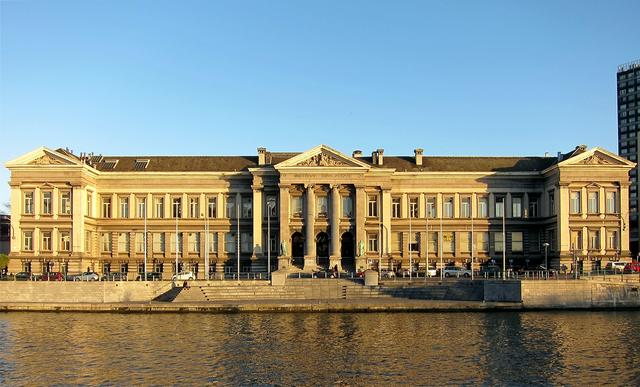
- The main buildings of interest in the district are:
- Convent "des Récollets", rue Georges Simenon 2, 4, 9-13.
- Saint Nicolas Church, rue Fosse-aux-raines 7. open everyday 8AM to 12AM.
- Sainte Barbe" hospice, place Ste Barbe.
- stable of the Fonck barracks, boulevard de la Constitution.
- Bavière hospital, boulevard de la Constitution.
- Destenay school, boulevard Saucy 16.
- Physiology Institute, place Delcourt 17.
- Grétry Museum, Rue des Récollets 34, +32 4 343 1610. 2PM-4PM Tu&Fr, 10AM-12PM Su.
- Museum of Tchantchès, rue Surlet 56, +32 4 342 7575. 2-4PM Su except July, Tu&Th. dedicated to the city mascot who is also the main character for the local marrionnette theaters
- Maison de la Science, Quai Edouard Van Beneden 22, +32 4 366 50 15.
- Aquarium-Muséum de Liège, Quai Edouard Van Beneden 22, +32 4 366 50 21.
- Departing from the amphitheater along the quay, a bateau-mouche (covered boat) offers river tours, from 1 Apr to 30 Oct (11AM, 1PM, 3PM and 5PM, €6, +32 (0)4 221 9221 et +32 (0)4 366 5021).
The main buildings of interest in the district are:
- Convent "des Récollets", rue Georges Simenon 2, 4, 9-13.
- Saint Nicolas Church, rue Fosse-aux-raines 7. open everyday 8AM to 12AM.
- Sainte Barbe" hospice, place Ste Barbe.
- stable of the Fonck barracks, boulevard de la Constitution.
- Bavière hospital, boulevard de la Constitution.
- Destenay school, boulevard Saucy 16.
- Physiology Institute, place Delcourt 17.
The main buildings of interest in the district are:
- Convent "des Récollets", rue Georges Simenon 2, 4, 9-13.
- Saint Nicolas Church, rue Fosse-aux-raines 7. open everyday 8AM to 12AM.
- Sainte Barbe" hospice, place Ste Barbe.
- stable of the Fonck barracks, boulevard de la Constitution.
- Bavière hospital, boulevard de la Constitution.
- Destenay school, boulevard Saucy 16.
- Physiology Institute, place Delcourt 17.
The main buildings of interest in the district are:
- Convent "des Récollets", rue Georges Simenon 2, 4, 9-13.
- Saint Nicolas Church, rue Fosse-aux-raines 7. open everyday 8AM to 12AM.
- Sainte Barbe" hospice, place Ste Barbe.
- stable of the Fonck barracks, boulevard de la Constitution.
- Bavière hospital, boulevard de la Constitution.
- Destenay school, boulevard Saucy 16.
- Physiology Institute, place Delcourt 17.
The main buildings of interest in the district are:
- Convent "des Récollets", rue Georges Simenon 2, 4, 9-13.
- Saint Nicolas Church, rue Fosse-aux-raines 7. open everyday 8AM to 12AM.
- Sainte Barbe" hospice, place Ste Barbe.
- stable of the Fonck barracks, boulevard de la Constitution.
- Bavière hospital, boulevard de la Constitution.
- Destenay school, boulevard Saucy 16.
- Physiology Institute, place Delcourt 17.
The main buildings of interest in the district are:
- Convent "des Récollets", rue Georges Simenon 2, 4, 9-13.
- Saint Nicolas Church, rue Fosse-aux-raines 7. open everyday 8AM to 12AM.
- Sainte Barbe" hospice, place Ste Barbe.
- stable of the Fonck barracks, boulevard de la Constitution.
- Bavière hospital, boulevard de la Constitution.
- Destenay school, boulevard Saucy 16.
- Physiology Institute, place Delcourt 17.
The main buildings of interest in the district are:
- Convent "des Récollets", rue Georges Simenon 2, 4, 9-13.
- Saint Nicolas Church, rue Fosse-aux-raines 7. open everyday 8AM to 12AM.
- Sainte Barbe" hospice, place Ste Barbe.
- stable of the Fonck barracks, boulevard de la Constitution.
- Bavière hospital, boulevard de la Constitution.
- Destenay school, boulevard Saucy 16.
- Physiology Institute, place Delcourt 17.
The main buildings of interest in the district are:
- Convent "des Récollets", rue Georges Simenon 2, 4, 9-13.
- Saint Nicolas Church, rue Fosse-aux-raines 7. open everyday 8AM to 12AM.
- Sainte Barbe" hospice, place Ste Barbe.
- stable of the Fonck barracks, boulevard de la Constitution.
- Bavière hospital, boulevard de la Constitution.
- Destenay school, boulevard Saucy 16.
- Physiology Institute, place Delcourt 17.
Grétry Museum, Rue des Récollets 34, +32 4 343 1610. 2PM-4PM Tu&Fr, 10AM-12PM Su.
Museum of Tchantchès, rue Surlet 56, +32 4 342 7575. 2-4PM Su except July, Tu&Th. dedicated to the city mascot who is also the main character for the local marrionnette theaters
Maison de la Science, Quai Edouard Van Beneden 22, +32 4 366 50 15.
Aquarium-Muséum de Liège, Quai Edouard Van Beneden 22, +32 4 366 50 21.
Departing from the amphitheater along the quay, a bateau-mouche (covered boat) offers river tours, from 1 Apr to 30 Oct (11AM, 1PM, 3PM and 5PM, €6, +32 (0)4 221 9221 et +32 (0)4 366 5021).
- Basilique Notre Dame de Chèvremont, Rue de Chèvremont 96, 4051 Chaudfontaine, +32 4 365 04 36.
Basilique Notre Dame de Chèvremont, Rue de Chèvremont 96, 4051 Chaudfontaine, +32 4 365 04 36.
- Visit the Carré District, where you can celebrate or party on any day, at any time. It's the preferred district of students, alternating shops and cafés, many of which allow dancing (sometimes on the tables!).
- The Philharmonic Orchestra, Royal Opera, and Theater de la Place head up the cultural life in Liège.
- Philharmonic Orchestra.
- Royal Opera, Place de l'Opéra, +32 4 221 47 22.
- Theater de la Place.
- Liège is the European city with the most theaters per person. Liège has an international reputation especially for its marionnette theaters, whose performances often involve the traditional folklore character Tchantchès in an unbelievably wide range of situations. The most-known marionnette theaters can be found at:
- Museum of Wallonian Life (Wednesdays and school holidays at 1430 and Sundays at 1030, Cour des Mineurs, +32 (0)4 237 9040, open even when the museum is closed.)
- Museum of Tchantchès (Oct to end Apr, Sundays at 1030 and Wednesdays at 1430, rue Surlet 56, +32 (0)4 342 7575)
- Theater Al Botroule, Rue Hocheporte 3, +32 4 223 0576. literally, "in the belly-button"
- Theater Denis, Rue Sainte Marguerite 302, +32 4 224 3154.
- Theater Mabotte, Rue Mabotte 125, Seraing, +32 4 233 8861.
- Movie theaters include Le Parc and Le Churchill for European films; Le Palace and Kinepolis for big-name blockbusters; and soon UGC Longdoz in the future "media city".
- Le Forum, rue Pont d’Avroy 45. a small but exceptionally-decorated venue, offers concerts, comedy performances, etc. Country Hall (in the outskirts) is a relatively new venue for huge shows and sporting events.
- Le Trocadéro. is the most Liégeois of Parisian cabarets, or the most Parisian of Liège cabarets, depending on how you look at it, while two other venues (La Bouch’rit and le Comiqu'Art) offer dinner-show combinations.
- La Zone, Quai de l'Ourthe, 42 - 4020, +32 4 3410727. is the place in Liège for alternative and underground music and arts. Opens only on events, check their program on the web before going there. Non expensive bar with plenty of soft drinks, beers and wine.
- Watch football ie soccer at Standard Liège, who play in First Division A, the top tier of Belgian football. Their home ground is Stade Maurice Dufrasne, capacity 27,000; it's on the river bank 2 km south of city centre.
- There are numerous other sports clubs including no less than three rowing clubs. RCAE, a university club but open to everyone, offers a range of sports from parachuting to spelunking. The sports fields at Xhovémont, Cointe or Sart Tilman are ideal for practice. The ice rink, dating from the water exposition of 1939, is in its last seasons before being moved, while a new swimming pool with modern facilities including a diving tower will soon be constructed in the center. (The previous one is being converted to a museum.) Other pools are spread throughout the city, notably in Outremeuse.
- For those who prefer a calmer sport, cycling or jogging is perfect along the quays of the Meuse. The woods at Coteaux de la Citadelle, Chartreuse, and Sart Tilman are all close, as are the magnificent countrysides of the Ardennes (with Condroz, Hesbaye, and Herve lending themselves particularly well to hiking and mountain-biking).
- A circuit is dedicated to Simenon (author of the Maigret stories), and a museum will be opening shortly.
-oNiwy.medium.jpg)
- The Feast of the Assumption (15 August) is celebrated here by the entire city and countless visitors.
- The celebrations of 15 August in Outremeuse welcome more than 300,000 people each year.
- The fair, held since the city was established, has become a fun-fair. It takes place from the first weekend in October to the second weekend in November (6 weeks).
- The Christmas Village, one of the biggest and oldest in the country, has more than one million visitors each year.
- The Celebrations of Wallonia (2nd weekend in September), the nuit des Coteaux (night events in the historic center), the Secret Gardens and Corners Day (la journée Jardins et Coins secrets - 3rd Sunday in June), and the heritage days (les journées du patrimoine - end September) are other key dates in Liège.
- The Festival of Walking, in the second half of August, offers urban walks.
The Feast of the Assumption (15 August) is celebrated here by the entire city and countless visitors.
The celebrations of 15 August in Outremeuse welcome more than 300,000 people each year.
The fair, held since the city was established, has become a fun-fair. It takes place from the first weekend in October to the second weekend in November (6 weeks).
The Christmas Village, one of the biggest and oldest in the country, has more than one million visitors each year.
The Celebrations of Wallonia (2nd weekend in September), the nuit des Coteaux (night events in the historic center), the Secret Gardens and Corners Day (la journée Jardins et Coins secrets - 3rd Sunday in June), and the heritage days (les journées du patrimoine - end September) are other key dates in Liège.
The Festival of Walking, in the second half of August, offers urban walks.
Visit the Carré District, where you can celebrate or party on any day, at any time. It's the preferred district of students, alternating shops and cafés, many of which allow dancing (sometimes on the tables!).
The Philharmonic Orchestra, Royal Opera, and Theater de la Place head up the cultural life in Liège.
Philharmonic Orchestra.
Royal Opera, Place de l'Opéra, +32 4 221 47 22.
Theater de la Place.
Liège is the European city with the most theaters per person. Liège has an international reputation especially for its marionnette theaters, whose performances often involve the traditional folklore character Tchantchès in an unbelievably wide range of situations. The most-known marionnette theaters can be found at:
- Museum of Wallonian Life (Wednesdays and school holidays at 1430 and Sundays at 1030, Cour des Mineurs, +32 (0)4 237 9040, open even when the museum is closed.)
- Museum of Tchantchès (Oct to end Apr, Sundays at 1030 and Wednesdays at 1430, rue Surlet 56, +32 (0)4 342 7575)
- Theater Al Botroule, Rue Hocheporte 3, +32 4 223 0576. literally, "in the belly-button"
- Theater Denis, Rue Sainte Marguerite 302, +32 4 224 3154.
Liège is the European city with the most theaters per person. Liège has an international reputation especially for its marionnette theaters, whose performances often involve the traditional folklore character Tchantchès in an unbelievably wide range of situations. The most-known marionnette theaters can be found at:
- Museum of Wallonian Life (Wednesdays and school holidays at 1430 and Sundays at 1030, Cour des Mineurs, +32 (0)4 237 9040, open even when the museum is closed.)
- Museum of Tchantchès (Oct to end Apr, Sundays at 1030 and Wednesdays at 1430, rue Surlet 56, +32 (0)4 342 7575)
- Theater Al Botroule, Rue Hocheporte 3, +32 4 223 0576. literally, "in the belly-button"
- Theater Denis, Rue Sainte Marguerite 302, +32 4 224 3154.
Theater Mabotte, Rue Mabotte 125, Seraing, +32 4 233 8861.
Movie theaters include Le Parc and Le Churchill for European films; Le Palace and Kinepolis for big-name blockbusters; and soon UGC Longdoz in the future "media city".
Le Forum, rue Pont d’Avroy 45. a small but exceptionally-decorated venue, offers concerts, comedy performances, etc. Country Hall (in the outskirts) is a relatively new venue for huge shows and sporting events.
Le Trocadéro. is the most Liégeois of Parisian cabarets, or the most Parisian of Liège cabarets, depending on how you look at it, while two other venues (La Bouch’rit and le Comiqu'Art) offer dinner-show combinations.
La Zone, Quai de l'Ourthe, 42 - 4020, +32 4 3410727. is the place in Liège for alternative and underground music and arts. Opens only on events, check their program on the web before going there. Non expensive bar with plenty of soft drinks, beers and wine.
Watch football ie soccer at Standard Liège, who play in First Division A, the top tier of Belgian football. Their home ground is Stade Maurice Dufrasne, capacity 27,000; it's on the river bank 2 km south of city centre.
There are numerous other sports clubs including no less than three rowing clubs. RCAE, a university club but open to everyone, offers a range of sports from parachuting to spelunking. The sports fields at Xhovémont, Cointe or Sart Tilman are ideal for practice. The ice rink, dating from the water exposition of 1939, is in its last seasons before being moved, while a new swimming pool with modern facilities including a diving tower will soon be constructed in the center. (The previous one is being converted to a museum.) Other pools are spread throughout the city, notably in Outremeuse.
For those who prefer a calmer sport, cycling or jogging is perfect along the quays of the Meuse. The woods at Coteaux de la Citadelle, Chartreuse, and Sart Tilman are all close, as are the magnificent countrysides of the Ardennes (with Condroz, Hesbaye, and Herve lending themselves particularly well to hiking and mountain-biking).
A circuit is dedicated to Simenon (author of the Maigret stories), and a museum will be opening shortly.
- Sunday morning market at la rive gauche
- The Marché de la Batte is where most locals visit on Sundays. The one of the longest markets in Europe stretches along the Meuse River by the Université de Liège and attracts many visitors to Liège. The market typically runs from early morning to 2 o'clock in the afternoon every weekend year long. Produce, clothing, and snack vendors are the main concentration of the market.
- Flea Markets at Saint Gilles (every Saturday morning on Boulevard Louis Hillier) and Saint Pholien (every Friday morning on Boulevard de la Constitution) also attract many visitors.
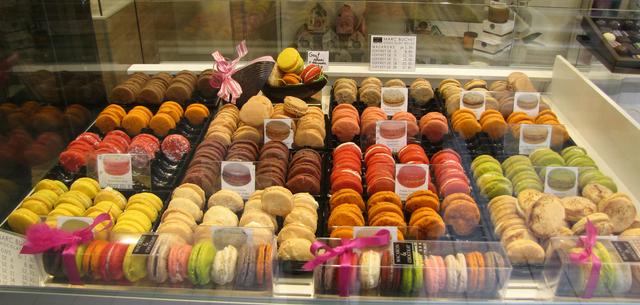
- Val Saint Lambert crystal, now sold throughout the world, makes an exceptional gift in the "splurge" category.
- The tourist information office sells local artists' products including scarfs with medieval motifs and ties with contemporary artistic designs.
- Marionnettes of "Tchantchès", a character from local folklore embodying the Liégeois attitude, are available in the 6 marionette theaters in the city.
Other typical purchases are food and drink products:
- As elsewhere in Belgium, pralines (filled chocolates) and the numerous cheeses and beers are a must.
- Local products include "Herve" cheese (with a strong smell!), "Sirop de Liège" (made from a mix of apples and pears and typically used for cooking/baking), and cider (the alcoholic kind).
- "Pèkèt" (genièvre) is an alcoholic beverage available in countless varieties.
- For sweets, you can't go far without encountering the famous Liège waffles, smelling of cinnamon and sugar. They're best when freshly-cooked, though the pre-packaged variety also exists and has spread to many other countries.
- Other sweets are available depending on the season: boûkètes (dark crêpes with raisins, eaten with brown sugar) are mainly available for 15 August and at Christmas, while lacquemants/lackmans (dry waffles filled with a mix of sugar and other sweets) are found at the fairs.
- If you find them, try "cûtès peûres" (baked pears), which unfortunately seems to have disappeared from the street vendors.
- Liège coffee (café liégeois) is originally from Vienna but was rebaptised by the Parisiens to show their support for the heroic resistance in Liège at the start of the first world war.
The best options for shopping are around Place Cathédrale and Place Saint Lambert, and in particular at Vinâve d'Ile (Celio...), Saint-Michel (Van den Borre, Delhaize, C&A), the Opera Galleries (Zara, Springfield) and the Saint Lambert Galleries (FNAC, Média Markt, Inno, Champion), as well as along the roads towards the center (rues Féronstrée, Saint-Gilles, Puits-en-Sock in Outremeuse, Grétry in Longdoz...)
Several large commercial centers are located on the outskirts of the city:
- Belle-Ile, Quai des Vennes 1 (take bus 377 from the Opera) (Angleur). North-American style shopping mall with Carrefour on site
- Médiacité shopping centre, Boulevard Raymond Poincaré 7 (easily accessible by car (with on-site carparking) or bus - 4, 26, 26, 31, 17, 29, 33, 35, 38B (Pont Longdoz stop), Rocourt, Boncelles, Herstal.... 126 stores
- Hypermarkt Carrefour HERSTAL, Rue Basse Campagne 1, Herstal. Large supermarket. Has a small international section (Italian,Spain,USA,UK,Asia,North Africa) for those missing things from home.
Belle-Ile, Quai des Vennes 1 (take bus 377 from the Opera) (Angleur). North-American style shopping mall with Carrefour on site
Médiacité shopping centre, Boulevard Raymond Poincaré 7 (easily accessible by car (with on-site carparking) or bus - 4, 26, 26, 31, 17, 29, 33, 35, 38B (Pont Longdoz stop), Rocourt, Boncelles, Herstal.... 126 stores
Hypermarkt Carrefour HERSTAL, Rue Basse Campagne 1, Herstal. Large supermarket. Has a small international section (Italian,Spain,USA,UK,Asia,North Africa) for those missing things from home.
Flea Markets at Saint Gilles (every Saturday morning on Boulevard Louis Hillier) and Saint Pholien (every Friday morning on Boulevard de la Constitution) also attract many visitors.
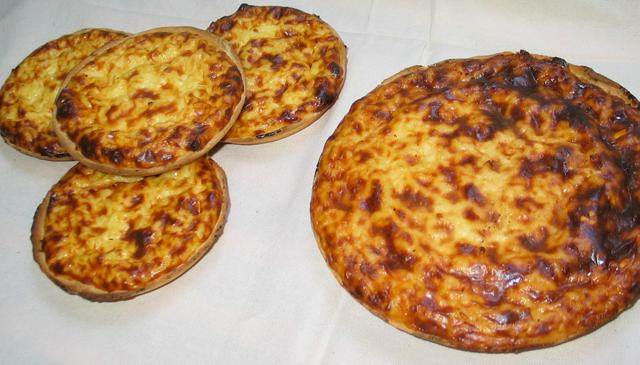 In addition to the local foods mentioned above, regional specialities include:
In addition to the local foods mentioned above, regional specialities include:
- boulets sauce-lapin, meatballs in a sauce made from Sirop de Liège, onions, vinegar and prunes, accompanied of course by frites - french fries. The boulet even has its own critics and reviews.
- la potée liégeoise, a country dish made from beans, potatoes, and bacon bits cooked together and drenched in vinegar.
- les boûkètes, dark crêpes served at New Year's Eve or other festive occasions
- le matoufèt, a cross between a crêpe and an omelette, made from flour, eggs, milk and bacon bits, and served either salty or sweet.
- la tarte au riz, originally from the neighboring city of Verviers or the area of Tancrémont
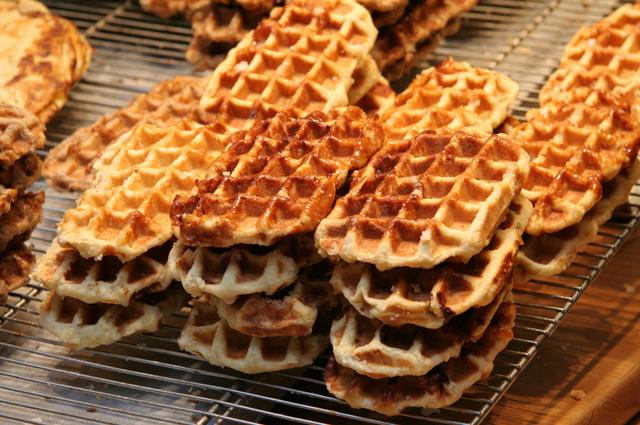
Other local recipes are available online.
Prices unfortunately are fairly high, as in most other Belgian cities. Budget restaurants will cost about €12-€15 per person, drinks included, mid-range restaurants between €25 and €50, and splurge restaurants well over that!
For budget solutions, snack shops like any of the sandwicheries or kebab shops offer cheap yet tasty food. A Döner kebab typically costs 3-5 euro, and a sandwich is around 2-4. Note that in Liège all snack shops charge 50 cents for sauce, and usually another 50 cents for vegetables. For example you can see a meatball sandwich for 2 euro on the price list; however, after the sauce and the vegetables it will be 3 euro in total. It is recommended to look for convenient stores for soft drinks as they're over-priced in snack bars.
Obtaining meals outside of conventional times can be a challenge, many restaurant do not serve between 2 and 6 in the afternoon, those that do tend to be full and you can expect to wait some time for service.
There are Northern American fast food chains in the city: A McDonald's is near the Opera, a BigMac meal is about €6, there's a Burger King near the Place Saint-Lambert and Pizza Hut can be found near the Opera and behind the city hall.
- Délifrance, Galeries St. Lambert and near Pont d'Avroy. Sandwicherie €5-€6 can cover a sandwich and a drink.
- Point Chaud, Place St. Lambert and Pont d'Avroy. Sandwicherie €5-€6 can cover a sandwich and a drink.
- Au Tchantchès, rue Grande Bèche (Outremeuse district. Restaurant/Brasserie with traditional decor.
- Café Lequet, 17 Quai sur Meuse. Local cuisine and ambiance. Try the boulet-frites.
- Le Venetto, rue de la Madeleine. One of the best Italian restaurants in Liège, limited menu but great atmosphere and unbeatable prices.
- Touch and Go, rue des Carmes. Specialising in pitas and do-it-yourself salads. Especially popular with students.
- Aux pâtes fraîches, 17 rue Saint-Gilles.
- L'Amarante, rue des Carmes.
- La Cigalière, 29 rue de la Régence. Sandwiches, salads, breakfasts, and crêpes - all top quality.
- Amour, Maracas et Salami (français), 78 rue Sur-la-Fontaine.
- C si bon!, Boulevard d'Avroy 238. Sandwiches, Salades & Catering Service
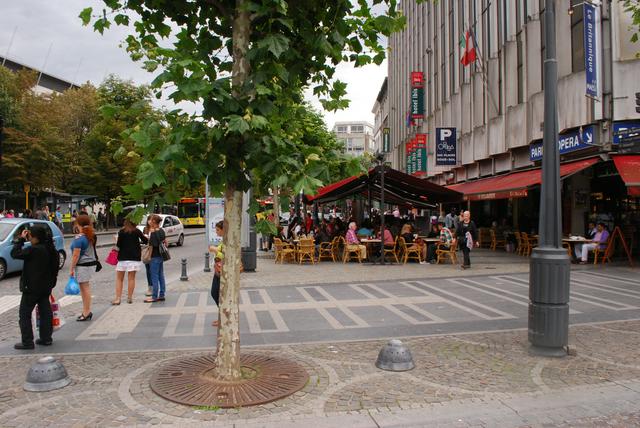
Délifrance, Galeries St. Lambert and near Pont d'Avroy. Sandwicherie €5-€6 can cover a sandwich and a drink.
Point Chaud, Place St. Lambert and Pont d'Avroy. Sandwicherie €5-€6 can cover a sandwich and a drink.
Au Tchantchès, rue Grande Bèche (Outremeuse district. Restaurant/Brasserie with traditional decor.
Café Lequet, 17 Quai sur Meuse. Local cuisine and ambiance. Try the boulet-frites.
Le Venetto, rue de la Madeleine. One of the best Italian restaurants in Liège, limited menu but great atmosphere and unbeatable prices.
Touch and Go, rue des Carmes. Specialising in pitas and do-it-yourself salads. Especially popular with students.
Aux pâtes fraîches, 17 rue Saint-Gilles.
L'Amarante, rue des Carmes.
La Cigalière, 29 rue de la Régence. Sandwiches, salads, breakfasts, and crêpes - all top quality.
Amour, Maracas et Salami (français), 78 rue Sur-la-Fontaine.
C si bon!, Boulevard d'Avroy 238. Sandwiches, Salades & Catering Service
- Amon Nanesse, Rue du stalon, 1-3 (behind the town hall, +32 4 250 67 83.
- As Ouhès, Place du Marché 21, +32 4 223 32 25.
- L'industrie, 6 rue Saint Gilles (at the start, on the right. nice brasserie specialising in mussels. Menu is in English, but waiters can hardly speak English. Cash only.
- The Kitchen, 139 bd de la Sauvenière, +32 4 250 20 74. concept restaurant but friendly and warm
- Le Vaudrée, 109 rue Val Benoit 4031 Angleur, +32 4 367 10 61. 40 Beers on tap and 1200 Bottles, Fantastic food as well.
- Cafe Lequet, Quai sur Meuse 17. For the local meatballs, Boulet à la liégeoise.
- Le Vaudrée 2, Rue Saint-Gilles 149, 4000 Liège, +32 4 223 18 80.
Amon Nanesse, Rue du stalon, 1-3 (behind the town hall, +32 4 250 67 83.
As Ouhès, Place du Marché 21, +32 4 223 32 25.
L'industrie, 6 rue Saint Gilles (at the start, on the right. nice brasserie specialising in mussels. Menu is in English, but waiters can hardly speak English. Cash only.
The Kitchen, 139 bd de la Sauvenière, +32 4 250 20 74. concept restaurant but friendly and warm
Le Vaudrée, 109 rue Val Benoit 4031 Angleur, +32 4 367 10 61. 40 Beers on tap and 1200 Bottles, Fantastic food as well.
Cafe Lequet, Quai sur Meuse 17. For the local meatballs, Boulet à la liégeoise.
Le Vaudrée 2, Rue Saint-Gilles 149, 4000 Liège, +32 4 223 18 80.
The area known as "Le Carré" offers numerous options to drink and party 365 days per year, with a young, vibrant, student atmosphere. Also worth a visit: the trendier Place du Marché, and the area around Place Cathédrale, to see and be seen.
- Le Vaudrée 2, Rue Saint-Gilles. where you can taste a good thousand or so Belgian and foreign beers. Santé!
- La Maison du Péquet. mainly serves fruit-flavored versions of genièvre, known locally as péquet.
- Pot au Lait, rue Soeurs de Hasque. is a café popular with exchange students living in the region.
- Les Olivettes, rue Pied du Pont des Arches. offers an ambience from an entirely different time.
- Millennium. nightclub.
- La Zone, Quai de l'Ourthe, 42 (Outremeuse. is a club for alternative and underground music and culture with a non expensive bar
- Le Sabor Latino. is a club opening onto the boulevard de la Sauvenière.
- K-fée, Rue de la Goffe, 6, +32 4 221 38 23. Nice little café with good coffee, breakfast and brunch
- Grand Maison, 37 Quai de la Goffe, +32 4 221 38 23. Another nice, real coffee-café with breakfast and snacks. (Sit outside in summer!) In addition, many of the cafés in the Le Carré area are a good alternative, with plenty of dancing and typically no entrance fee.
Le Vaudrée 2, Rue Saint-Gilles. where you can taste a good thousand or so Belgian and foreign beers. Santé!
La Maison du Péquet. mainly serves fruit-flavored versions of genièvre, known locally as péquet.
Pot au Lait, rue Soeurs de Hasque. is a café popular with exchange students living in the region.
Les Olivettes, rue Pied du Pont des Arches. offers an ambience from an entirely different time.
Millennium. nightclub.
La Zone, Quai de l'Ourthe, 42 (Outremeuse. is a club for alternative and underground music and culture with a non expensive bar
Le Sabor Latino. is a club opening onto the boulevard de la Sauvenière.
K-fée, Rue de la Goffe, 6, +32 4 221 38 23. Nice little café with good coffee, breakfast and brunch
Grand Maison, 37 Quai de la Goffe, +32 4 221 38 23. Another nice, real coffee-café with breakfast and snacks. (Sit outside in summer!)
Liège is generally a safe city during daytime. However, be cautious at night especially for single females. It is not recommended for women to walk alone in the evenings as many foreign female students have experienced being followed late at night. Robbery is rare but harassment to single females occurs often, mostly verbal but some travelers have experienced assaults in off-downtown area. If where you're staying is more than a 5-min walk off the centre, it is suggested to take a cab (they have a line-ups around The Opera and Pont d'Avroy bus terminal) after 10PM.
- Neupré - World War II Ardennes American Cemetery and Memorial, commemorates the American soldiers who died in Northern Europe during WWII
- Henri-Chapelle - World War II Henri-Chapelle American Cemetery and Memorial. The final resting place for 7,992 American military dead lost during the drive into Germany
- Spa
- Tongeren
- Maastricht
- Aachen
[[Neupré]] - World War II Ardennes American Cemetery and Memorial, commemorates the American soldiers who died in Northern Europe during WWII
[[Henri-Chapelle]] - World War II Henri-Chapelle American Cemetery and Memorial. The final resting place for 7,992 American military dead lost during the drive into [[Germany]]
